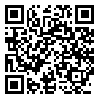Volume 4, Issue 2 (11-2020)
J Social Behav Communit Health 2020, 4(2): 545-552 |
Back to browse issues page
Download citation:
BibTeX | RIS | EndNote | Medlars | ProCite | Reference Manager | RefWorks
Send citation to:



BibTeX | RIS | EndNote | Medlars | ProCite | Reference Manager | RefWorks
Send citation to:
Saiki D, Kandiah J, Gunlach J, Melton M. Pilot Analysis of a Survey to Assess University Undergraduate Males Stress, Dressing and Eating Habits. J Social Behav Communit Health 2020; 4 (2) :545-552
URL: http://sbrh.ssu.ac.ir/article-1-138-en.html
URL: http://sbrh.ssu.ac.ir/article-1-138-en.html
1- Faculty of the Department of Applied Business Studies, Ball State University, Muncie, IN, U.S.A. , desaiki@bsu.edu
2- Faculty of the Department of Nutrition and Dietetics, Ball State University, Muncie, IN, U.S.A.
3- Department of Psychological Science, Ball State University, Muncie, IN, U.S.A.
4- Department of Nutrition and Health Science, Ball State University, Muncie, IN, U.S.A.
2- Faculty of the Department of Nutrition and Dietetics, Ball State University, Muncie, IN, U.S.A.
3- Department of Psychological Science, Ball State University, Muncie, IN, U.S.A.
4- Department of Nutrition and Health Science, Ball State University, Muncie, IN, U.S.A.
Abstract: (1855 Views)
Background: Stress can effect all aspects of life, including eating and dressing behavior. These changes impact the health and wellness of individuals. With less known research on men, the purpose of this study was to report preliminary findings using an original research instrument to assess the perceived effects of stress on eating and dressing behaviors among undergraduate college males.
Methods: The sample included 32 male undergraduate students enrolled at a Midwestern University in the United States in 2017 completed the survey. The participants completed the survey two weeks apart. The instrument, Male Stress Dressing and Eating Survey, included 42 questions divided into four sections: 1) demographics, 2) effort put forth to control dressing and making healthy eating choices, 3) patterns of dressing and eating when stressed, and 4) clothing items worn and foods eaten when under non-stressful and stressful conditions. Cohen’s Kappa (κ) was used to analyze test-retest reliability. The Wilcoxon signed ranks test, a nonparametric, paired sample test, was used to ascertain preliminary results pertaining to eating and dressing during perceived conditions.
Results: Kappa values for these dressing question ranged from κ = -0.01
to κ = 0.60. All Infraclass Correlation Coefficient test-retest coefficients were statistically significant (p < 0.05), with the median being .66 demonstrating good reliability. Descriptive statistics and nonparametric tests indicated that men under perceived stress were more likely to choose mixed dishes, salty-crunchy foods, sweet foods, and modify their diet. When under perceived stress, these men used fewer accessories and did not dress formally, were not engaged in hair maintenance behaviors, were less likely to use scent enhancer, and did not enhance their appearance.
Conclusion: This survey has the potential to be reliable and useful in research related to stress, food, and dressing. Specifically, the instrument appears to be a useful tool for practitioners and researchers in the applied and academic areas associated with this age group and gender.
Methods: The sample included 32 male undergraduate students enrolled at a Midwestern University in the United States in 2017 completed the survey. The participants completed the survey two weeks apart. The instrument, Male Stress Dressing and Eating Survey, included 42 questions divided into four sections: 1) demographics, 2) effort put forth to control dressing and making healthy eating choices, 3) patterns of dressing and eating when stressed, and 4) clothing items worn and foods eaten when under non-stressful and stressful conditions. Cohen’s Kappa (κ) was used to analyze test-retest reliability. The Wilcoxon signed ranks test, a nonparametric, paired sample test, was used to ascertain preliminary results pertaining to eating and dressing during perceived conditions.
Results: Kappa values for these dressing question ranged from κ = -0.01
to κ = 0.60. All Infraclass Correlation Coefficient test-retest coefficients were statistically significant (p < 0.05), with the median being .66 demonstrating good reliability. Descriptive statistics and nonparametric tests indicated that men under perceived stress were more likely to choose mixed dishes, salty-crunchy foods, sweet foods, and modify their diet. When under perceived stress, these men used fewer accessories and did not dress formally, were not engaged in hair maintenance behaviors, were less likely to use scent enhancer, and did not enhance their appearance.
Conclusion: This survey has the potential to be reliable and useful in research related to stress, food, and dressing. Specifically, the instrument appears to be a useful tool for practitioners and researchers in the applied and academic areas associated with this age group and gender.
Type of Study: Original Article |
Subject:
Social Behavior
Received: 2020/02/18 | Accepted: 2020/07/28 | Published: 2020/11/20
Received: 2020/02/18 | Accepted: 2020/07/28 | Published: 2020/11/20
Send email to the article author
| Rights and permissions | |
 |
This work is licensed under a Creative Commons Attribution-NonCommercial 4.0 International License. |








